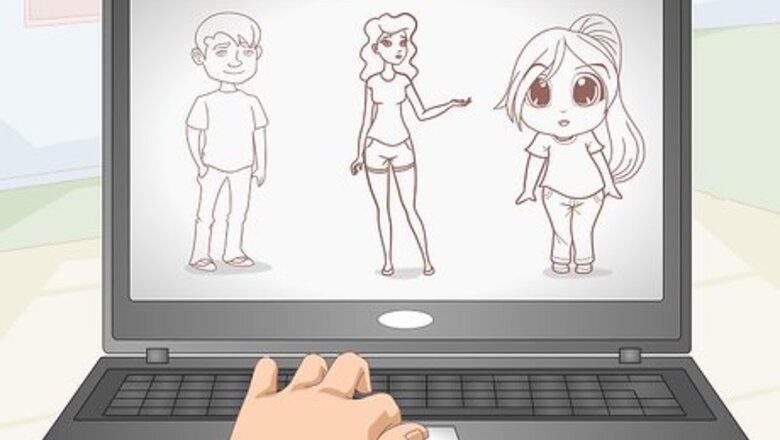
views
Coming up with a Design

Study other character designs for inspiration. Research your cartoon character design by studying other characters that you admire or animation styles that you enjoy. Take note of defining features, the line quality, the color schemes, and any other artistic styles that are used to bring the character to life so you can include them in your own design. Read comic books that tell stories with the characters so you can see how they change with different emotions, angles, and actions. Find a cartoon artist whose style you like and look at their character designs to inspire your own work.Tip: Check out different styles of animation that you may not be as familiar with such as comic strips, Japanese anime, classic television cartoons, and any other styles you can find to look for ideas.
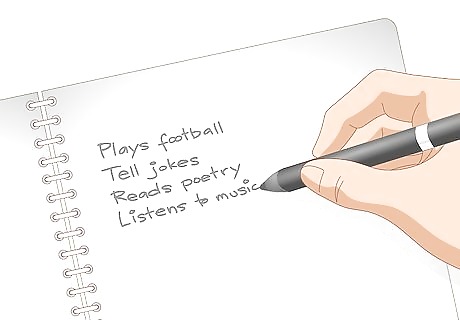
Write a list of interests and character traits you want to include. Brainstorm character design ideas by jotting down a list of hobbies, interests, and personality traits that you want your character to reflect. Write them out on a piece of paper and narrow them down to the key traits that you want to include in your cartoon character. Your cartoon character’s personality should help guide the way they look. For example, if your character plays football and loves to tell jokes, then they would look different than a character that loves to read poetry and listen to classical music.
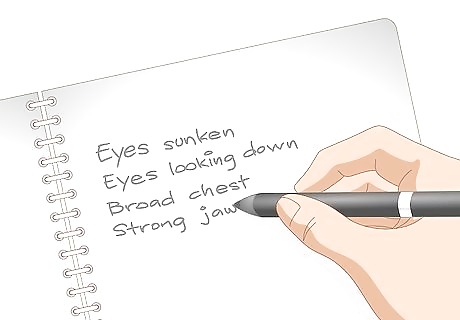
Make a list of features that you can exaggerate for your character. Choose key details to embellish that will highlight the personality traits of your character. As you’re coming up with your character, think about features that can really bring out their personality without having to say it out loud. Cartoon characters are meant to be larger than life, with details and traits that are exaggerated and dramatic. For instance, if your character is bookish and shy, then maybe their eyes are sunken and are always looking down. Exaggerated details can illustrate your character’s traits without saying them out loud. For example, a broad chest and strong jaw can make your character seem strong and brave without having to explicitly state it.
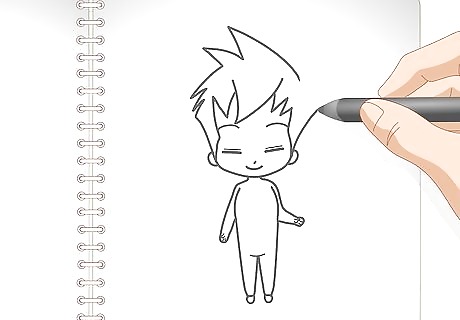
Choose distinctive details for your character to make it unique. Use specific features and details to set your cartoon characters apart from others and to bring out their personality. You can also choose to use specific tropes or features to define your cartoon style, such as the Simpson’s yellow skin, that will allow people to immediately recognize your cartoon. Come up with a unique way of depicting eyes or hair for your character. Use features to define your character. For example, perhaps your character suffered an injury as a child when their parents were taken by the mafia and they have a distinctive scar on their face as a reminder. Details don’t always have to be significant to the character. You could include something about yourself, such as a favorite hat or shirt that you had as a kid in your animation.
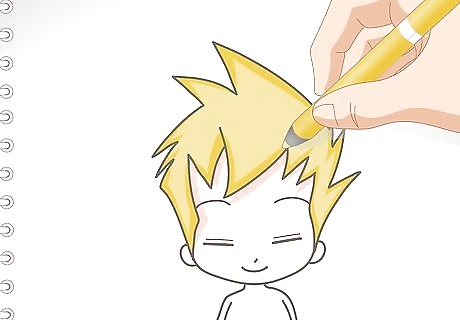
Select colors that communicate the character’s personality. Darker colors and shades can reflect a moody or evil character, while bright and vibrant colors can make a cartoon character seem happy and lovable. When you’re designing your character, consider the colors and tones that you want to use when you depict them, such as their hair, clothing, skin, and eyes to help illustrate their personality. Consider coloring the skin of your characters a distinctive color to accent their moods and temperaments. For instance, your character can turn slightly red when they’re angry, or they could have a pale shade of green skin when they’re feeling ill. You can also flip convention on its head by having an evil character with lots of bright pink, yellow, and other happy colors.
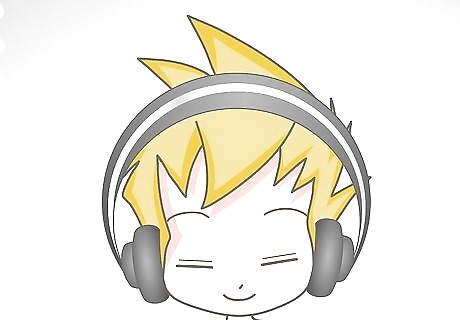
Add accessories to your character to emphasize their traits. What your character uses or carries with them can reveal a lot about their mood and personality. Create a list of items, clothing, objects, or anything else that your character uses or interacts with so you can include it in your animation. For example, a cartoon character that’s a detective might have a magnifying glass handy or wear a long khaki trenchcoat. Use the details to express the personality of your character. If you have an introverted character who loves music, maybe they’ve always got on a pair of headphones, or maybe they’re constantly checking themselves out in a pocket mirror if they’re super vain.
Drawing a Cartoon Character
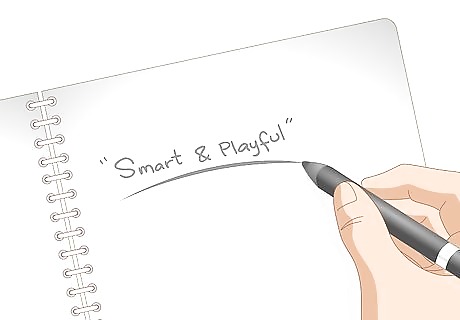
Keep a list of key details you want to include. When you start to draw your cartoon character, have a list of descriptions and features you want to include in your sketch for reference. Keep the list next to you while you work. You may find that some features just don’t work as you’re drawing the cartoon character, and that’s okay! Having a reference can help keep you on track while you’re working away creating the character.
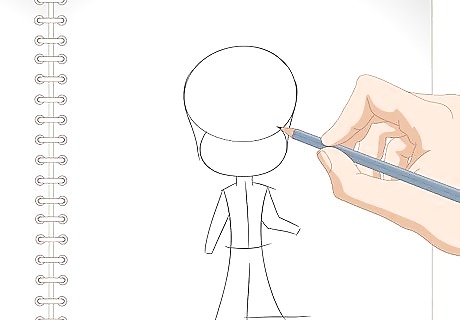
Sketch out the shape of the character on paper with a pencil. Start drawing your cartoon character by choosing a basic shape based on who they are, such as a rounded shape for chubby character or a thin shape with lots of sharp lines if they’re really skinny. Take a sheet of paper and a pencil and start lightly sketching out the shape of your character. Don’t make any deep or hard markings so you can easily erase and revise your rough sketch. Use a notebook or sketch paper to sketch out your character.Tip: Don’t be afraid to erase and start over! It may take some time for you to create the character on paper that you see in your head.

Add details to the sketch to start to flesh it out. As your character starts to take shape, start adding some of the key features that will make it seem more realistic. Use your pencil to lightly add in the features, objects, clothing, and other details that are unique to your cartoon character. Use defining features and items to highlight the personality of your character, such as reading glasses for a nerdy character or a sword for a warrior.

Fill in the face of the sketch. The face of your cartoon character will be it’s most defining and striking feature. Add a nose, mouth, eyes, ears, and all of the other facial features you plan to include. Put an expression on your character that fits their mood and personality. For example, if they’re a happy-go-lucky type of character, sketch them with a big smile on their face.
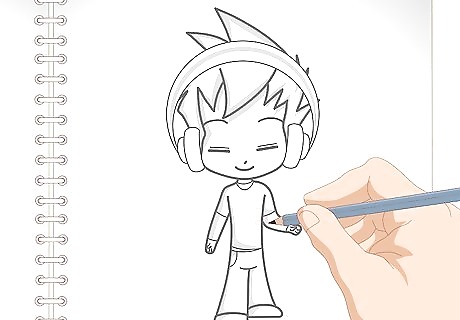
Add shading to the lines to add depth to the character. Go back over the lines to fill them in and make them appear fuller. Use shading to give more depth and dimension to your character on the paper. Erase any faint pencil markings from your sketch to make it feel more finished.
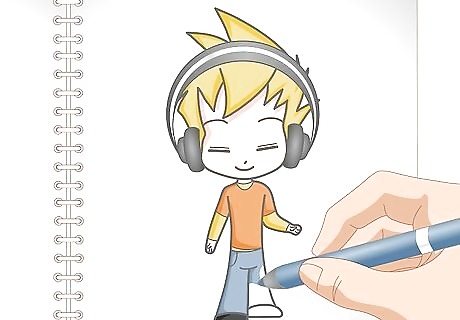
Color the sketch and add shading to bring it to life. Choose paints and colors that fit the style of your cartoon character. Add color to your sketch to really bring the character to life! For example, watercolors might fit a whimsical, dreamy cartoon character, while color pencils would work better for a comic-strip type of character. Use colored pencils for an easy way to add color to your cartoon character.
Using Design Software to Create a Character
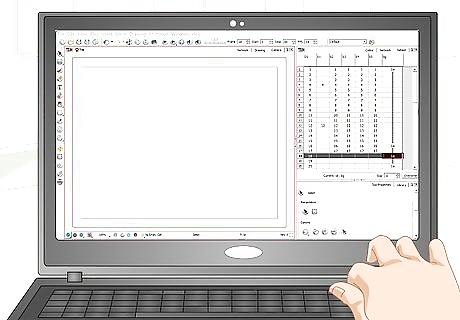
Choose a program, app, or website to create your character. Research which program is best suited to your needs. Paid programs such as Adobe Illustrator are more complicated to learn how to use, but they’ll produce the most professional results and will be the most customizable. You can also use free apps and websites to make a cartoon character quickly and easily. Search online for free apps and websites you can use. A few popular options include Cartoonify, Animaker, and Toonytool. Programs such as Adobe Illustrator, Photoshop, CorelDRAW, and others may require you to follow a tutorial in order to learn how to properly use them.
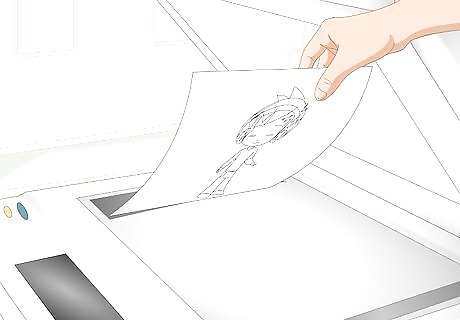
Sketch your character on paper and scan it or draw it digitally. To convert your cartoon character into a digital animation that you can manipulate with a design program, you can either draw it on paper and then scan it to your computer, or you can draw it on the program itself. Create your digital character and get it into the design software so you can add color, shading, movement, and other effects to it. Some programs will have templates of heads, faces, eyes, arms, and other features that you can add to your character to complete it.
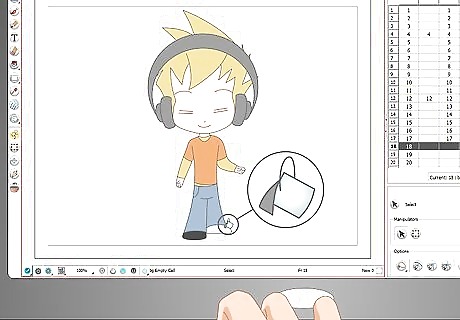
Color your character digitally using the program. The design program or app will have lots of color options for you to choose from to add to your character. Look through them and select the ones that you feel best suit your cartoon. Many programs will allow you to customize your color options for the specific color that you want.
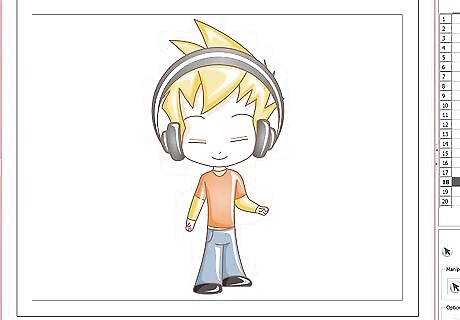
Add effects to your digital cartoon character using your design software. Many design programs will allow you to enhance your cartoon characters by adding shading, highlights, filters, and other effects. Choose effects that suit your character and style and add them to your cartoon! Choose a filter that adjusts the brightness, contrast, and color to create a color effect on your character to enhance its appearance.Tip: Use design programs to add movement to your cartoon character to make them more dynamic.
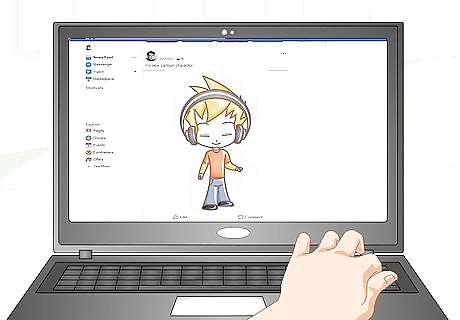
Upload your cartoon character to share it with the world. One of the best aspects of using a digital design program or app is that you can quickly and easily share your cartoon character. Send it to your friends and family when you’re finished or create a full comic strip or graphic novel that you could submit for publication. Save your cartoon character by selecting the save option from the file menu so you can keep a copy of it stored on your computer or device. Share your cartoon character with your friends and family on social media or post it to your blog. Search for publishing companies that are accepting submissions if you want to submit your cartoon for publication.
















Comments
0 comment